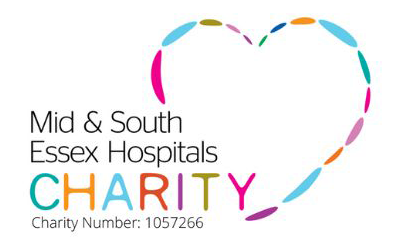Glossary
On this page is the Glossary this covers in more depth some of the terms you will hear during your surgery and stay in hospital. Please note: Not all surgical procedures will require the items mentioned in the Glossary.
Abdominal binder for the DIEP
An abdominal binder (support bandage) is worn, day and night, for up to 8 weeks. This will be fitted after surgery to support your abdomen.
Catheter
You will have a catheter (a tube passed up into the bladder) inserted while you are in theatre. This will allow you to pass water without having to get out of bed as you will be on bed rest for a few days after your operation. As soon as you are up and about the catheter will be removed.
Many women worry about the catheter, however it causes very little discomfort and is removed simply and easily by the nurse. If you need to have your bowels open whilst on bed rest, you will have a bed-pan. However after the initial few days you will be able to walk to the bathroom.
Compression Socks
As your surgery is long you will need to wear anti thrombus socks (compression socks). They are put on before your operation and are worn for the whole time in hospital, only removing them for a short time for hygiene purposes.
In addition to the compression socks, inflatable boots or cuffs are worn around your calves for 24-48 hours after your operation. The boots or cuffs inflate and deflate, gently massaging your calves and helping your circulation. Once you are up and about these are removed.
Correction of Excess Skin (‘Dog ear’)
At the end of a wound excess skin is sometimes visible. This is due to the shape of the tissue removed and the way the wound has to be closed. The piece of tissue is generally just skin and looks like a dog’s ear. Dog ears sometimes reduce with time and they are not generally a problem, however if they are large it is sometimes possible to improve them. In most cases surgery can be performed under local anaesthetic as a day case.
Doppler
You may have to have a scan of your abdomen using a small hand held scanner called a Doppler. This is to pinpoint the vessels in the abdomen before the surgery. The areas will be marked with a pen. The doctor will see you on the morning of your surgery and draw some other markings on you for use as a guide during the surgery.
Drains
You will have drains either side of your abdominal wound and one or two at the side of your reconstructed breast they are usually removed before you go home.
Intra Venous Infusion (Drip)
The IVI (drip) will re-hydrate you during and after your operation, as you will not have been able to drink for many hours. It is also used to give medication if required. Your surgeon will decide when you can commence a normal diet.
Oxygen
You will have some oxygen administered through two small nasal tubes that sit just in each nostril. Oxygen is needed until the level of oxygen in your blood is back to normal.
Lipofilling – Autofat injection
Fat is extracted from other parts of the body using liposuction and then injected to fill out any contours or dips in the reconstructed breast. Usually 50% of the fat will be naturally absorbed by the body and the procedure may need to be repeated.
Liposuction
With Liposuction fat is broken up using a hollow tube called a canula and the fat suctioned out, reducing contour excesses.
Scar Massage
Scar tissue performs the vital job of mending the body. However the scar tissue can tighten, limit movements and become uncomfortable. Massage helps to encourage the scar tissue to form in the correct lines and make a more functional scar rather than a restrictive, tight scar. Massage also makes the scar less sensitive, improves circulation and prevents adhesions.
To massage your scars apply a small amount of thick unscented cream or lotion (aqueous cream etc) to the scar. Use the thumb and index finger to massage in a slow circular motion. Use a firm pressure to massage the tissues below the skin. Massage several times a day when all wounds are healed fully.
Shoulder Exercises
Following breast reconstruction, there is a small risk you will develop a stiff shoulder. This is mainly because the surgery is in close proximity to the shoulder joint and you will inevitably be a bit reluctant to move the arm. Your physiotherapist will advise and guide you on which shoulder exercises to do and when. The exercises will help to:
Prevent you developing a stiff, painful shoulder
Ease muscle cramps and spasms around your shoulder
Improve blood supply to the area and therefore help the healing process.
You will usually be advised to start the exercises five days after surgery depending on which blood vessels have been affected by the surgery.
Note; You will probably feel a certain tightness, pulling and discomfort when you do the exercises. This is normal. However if you are finding the exercises really painful, stop and discuss this with your physiotherapist. Only do the exercises that you have been advised to do.
Please do not start doing the exercises until your physiotherapist has told you to do so.

